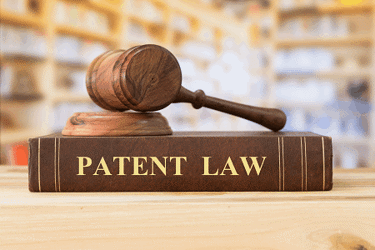The Biosimilar Patent Dance: What Can We Learn From Recent BPCIA Litigation?
By Limin Zheng, Ph.D., GCA Law Partners LLP

The Biologics Price Competition and Innovation Act of 2009 (BPCIA), enacted in March 2010, provides for an elaborate process of information exchange — known as the “patent dance” — between a biosimilar applicant and a reference product sponsor (RPS) intended to resolve potential patent disputes in an orderly and expeditious fashion. In Part 1 of this article, we provided a brief overview of the procedural framework under BPCIA and the decisions of the U.S. Supreme Court and the U.S. Court of Appeals for the Federal Circuit from last year that gave biosimilar applicants sole control over whether to start the patent dance and how far to take it. We also discussed the advantages and disadvantages of the patent dance for biosimilar applicants and factors to consider in making the decision.
Given that BPCIA was signed into law less than 10 years ago, BPCIA-related litigation is still in the nascent stage. A survey of the cases filed under BPCIA shows biosimilar applicants have taken several different approaches to the patent dance. Of the 17 biosimilar products litigated under BPCIA to date, in most cases (about 70 percent), the applicants engaged in and completed the patent dance before the lawsuits (setting aside allegations of noncompliance with the disclosure requirements). So far, in three instances, the biosimilar applicants have declined to dance outright.
Amgen v. Sandoz
The first was the Amgen v. Sandoz case that led to the Supreme Court’s seminal decision last June. This was also the very first BPCIA case litigated. In July 2014, Sandoz notified Amgen that the FDA had accepted for review its abbreviated biologics license application (aBLA) for Zarxio (filgrastim), a biosimilar to Amgen’s Neupogen. In the same letter, Sandoz declined to participate in the patent dance and gave notice of commercial marketing. On October 24, 2014, Amgen filed suit in the Northern District of California, alleging noncompliance with BPCIA and patent infringement. Only two patents were asserted: one claimed methods of treating a disease requiring peripheral stem cell transplantation, and the other claimed methods of antibody purification. On September 3, 2015, while the suit was still pending and the trial court’s decision on Amgen’s BPCIA violation claims was on appeal, Sandoz launched Zarxio in the U.S. at risk, after the expiration of a temporary injunction ordered by the Federal Circuit pending appeal. In September 2017, the parties stipulated to non-infringement of the method-of-treatment patent under the trial court’s claim construction. In December 2017, the trial court granted summary judgment of non-infringement of the remaining antibody-purification patent. The trial court entered final judgment in favor of Sandoz in January.
Interestingly, in the related pegfilgrastim dispute between Amgen and Sandoz, Sandoz chose to dance. Upon completion of the dance, Amgen sued Sandoz in the same court on May 12, 2016, about a year after the filing of the filgrastim suit, alleging infringement of the same antibody purification patent, as well as a method of treatment patent. The court deemed the two cases related and entered final judgment in Sandoz’s favor in the pegfilgrastim case in January as well. Sandoz also decided to dance in the etanercept dispute concerning Erelzi, its biosimilar to Amgen’s Enbrel, and agreed to a consent order not to launch in the U.S. during the pendency of the litigation.
Janssen Biotech v. Samsung Bioepis
In Janssen Biotech v. Samsung Bioepis, Samsung Bioepis notified Janssen in May 2016 that the FDA had accepted for review Samsung Bioepis’s aBLA for Renflexis (infliximab), a biosimilar to Janssen’s Remicade, but declined to provide Janssen with a copy of the aBLA or any other information required to start the patent dance. Samsung Bioepis also provided notice of commercial marketing in the same letter. Janssen sued Samsung Bioepis almost a year later, on May 17, 2017, in the District of New Jersey, alleging infringement of three patents directed to cell culture media and methods of protein purification. The parties settled without any substantive motion practice and filed a stipulation of dismissal with prejudice on November 10, 2017, with respect to Samsung Bioepis’s manufacturing process described in the documents produced. (While the suit was still pending, Samsung Bioepis launched Renflexis in the U.S. on July 24, 2017. Janssen did not seek a preliminary injunction.)
Genentech v. Sandoz
Most recently, in Genentech v. Sandoz, Sandoz declined to dance but provided Genentech and Biogen with a copy of the aBLA for Rixathon/GP2013 (rituximab), Sandoz’s biosimilar to Rituxan, in September 2017. On December 21, 2017, Genentech, Biogen, and City of Hope (owner of some of the patents-in-suit) sued Sandoz in the District of New Jersey, alleging infringement of 24 patents claiming host cells, manufacturing processes, and methods of treatment. The suit is still in its early stages, with answers by Sandoz defendants completed in early February.
With one exception, the manufacturing process patents asserted by Genentech do not have claims specific for rituximab. In its complaint, Genentech did not allege that Sandoz gave its notice of commercial marketing before the suit. To the extent Sandoz did not do so, Genentech arguably cannot bring a declaratory judgment action based on these manufacturing process patents under BPCIA. In the event the biosimilar applicant refuses to dance, BPCIA only authorizes a suit on “any patent that claims the biological product or a use of the biological product.” Sandoz, however, did not challenge the trial court’s jurisdiction over these manufacturing process patents. The meaning and scope of this statutory language will have to be decided another day.
Is The Patent Dance For You?
There obviously is no one formula for deciding whether to engage in the patent dance or how far to take the dance. It depends on a number of factors including the scope of the RPS’s patent portfolio (including the number and type of potential patents at issue), availability of non-infringement and invalidity defenses, the timetable for launch, and the company’s resources, including whether incremental wins are needed to raise money to fund litigation.
The stated goal of the patent dance is “to ensure that litigation surrounding relevant patents will be resolved expeditiously and prior to the launch of the biosimilar product, providing certainty to the applicant, the reference product manufacturer, and the public at large.” To the extent that is an achievable goal, it remains to be seen whether the best way to achieve it is through the patent dance.
About the Author:
Limin Zheng is a partner at GCA Law Partners LLP. Her practice emphasizes patent and other complex technology litigation and spans a broad range of technologies, with a focus on biotechnology, biotherapeutics, and medical devices. She can be reached at lzheng@gcalaw.com.
